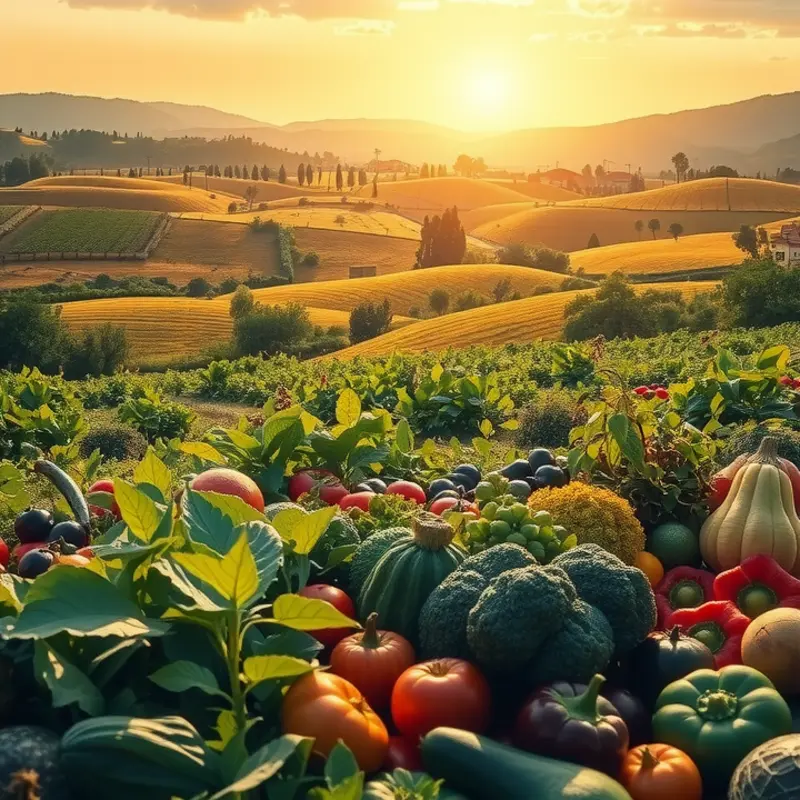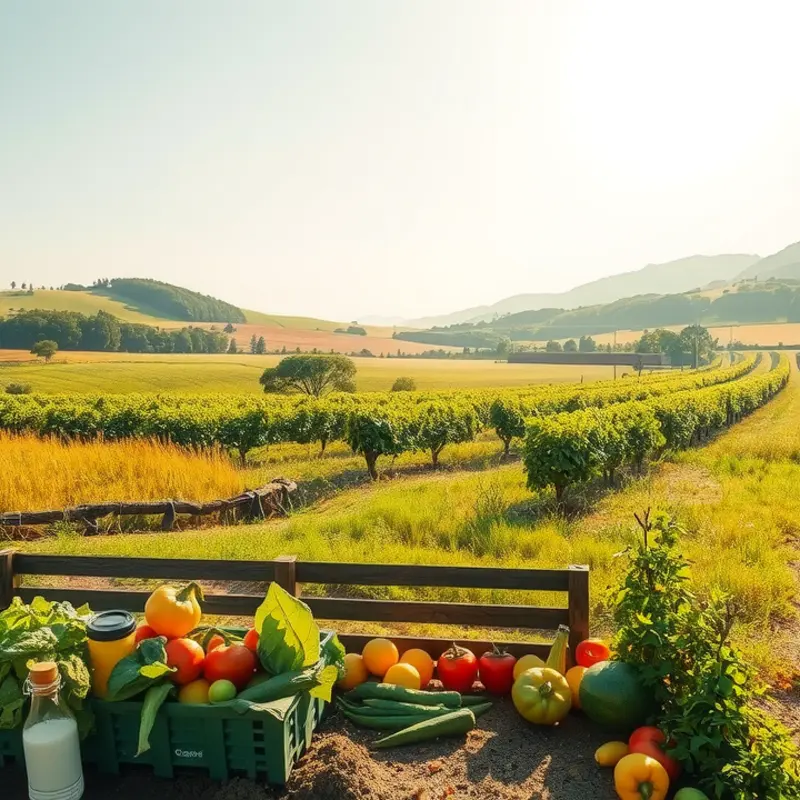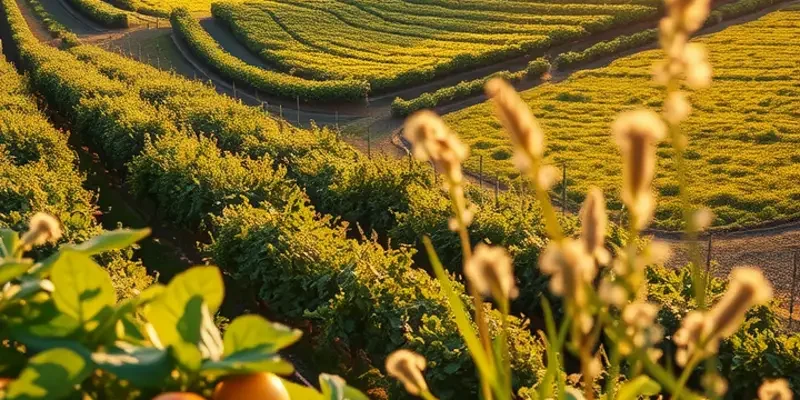Seasonal eating is more than a culinary trend; it’s a conscious choice that can significantly impact our environment. By opting for produce that aligns with the current season, you not only elevate the flavors of your meals but also support sustainable farming practices, reduce carbon footprints, and contribute to local economies. This approach nourishes your body and the earth—promoting biodiversity and minimizing resource depletion. Let’s explore how you can embrace seasonal eating to bring positive changes to your life and the planet.
The Environmental Impact of Seasonal Eating

Eating with the seasons is a practice aligned with nature’s rhythms, creating a harmonious balance between our dietary habits and the planet’s ecological needs. Choosing seasonal foods significantly reduces our ecological footprint, especially when they are locally sourced. By opting for foods that are in season, we cut down on the energy consumed in transporting goods across vast distances, which in turn leads to a substantial decrease in carbon emissions. Seasonal eating promotes local economies. When we buy from nearby farmers, we foster sustainable agriculture, enabling farmers to use age-old techniques that preserve soil health and reduce chemical dependencies. These practices not only support the land but also provide communities with access to fresh, nutrient-rich produce.
Transporting out-of-season produce involves long supply chains that heavily depend on refrigeration, packing materials, and fossil fuels. Consuming local and seasonal produce minimizes these logistical needs. This shift not only reduces the hidden costs of transportation but also limits food waste because local produce is fresher and often lasts longer due to reduced time in transit. Support of local farmers also strengthens local food systems, making regions more resilient to economic disruptions and climatic changes.
The link between seasonal eating and biodiversity is profound. By eating with the seasons, we allow time for various species to thrive. Diverse planting and rotation reduce diseases and pests naturally, promoting biodiversity both above and within the soil. This biodiversity is crucial for pollinating plants, rotating crops, and maintaining fertile soil without excessive chemical aid.
Integrating seasonal eating into daily life requires awareness and practical adjustments. Start by frequenting local farmers’ markets where the selections reflect the current season. Meal planning can be a pivotal tool here. To adapt, consider reviewing practical ingredient batching strategies available at nutritional adequacy basics, which can help you incorporate seasonal ingredients efficiently. Reference seasonal food charts and incorporate seasonal foods into meal preps, ensuring that you’re making the most of nature’s offerings. Cooking with seasonal ingredients often requires less complex methods, allowing the natural flavors to stand out and making meal preparations simpler.
Seasonal eating is not just a dietary choice but an active contribution to preserving our environment. It encourages a lifestyle that respects natural cycles, supporting eco-friendly choices that benefit both personal health and the planet.
Simple Steps to Embrace Seasonal Eating

Incorporating seasonal produce into your diet can be a rewarding and eco-friendly endeavor. Here are some practical steps to help you embrace seasonal eating and create a more sustainable kitchen.
Start at Local Farmers’ Markets
Visit your local farmers’ markets to discover the freshest produce available each season. Engage with farmers and vendors to learn more about their harvesting practices and gain insights into the fruits and vegetables currently in season. Purchasing directly from farmers not only supports the local economy but also reduces the carbon footprint associated with transporting food across long distances.
Utilize Seasonal Food Guides
Online resources abound to help you identify what produce is in season in your region. Seasonal Food Guides provide a month-by-month breakdown, making it easy to plan your meals around locally available ingredients. Some guides even offer nutritional information and recipe suggestions to inspire your culinary adventures.
Implement Meal Prepping with Seasonal Produce
Meal prepping can simplify your weekly cooking routine and ensure you’re using seasonal produce effectively. Start by selecting a few in-season fruits and vegetables to focus on in your dishes. Create a plan, chop your ingredients, and store them appropriately to maximize their shelf life. Practical ingredient batching techniques can help streamline this process.
Explore Community-Supported Agriculture (CSA) Options
Consider joining a Community-Supported Agriculture (CSA) program to receive regular bundles of fresh produce, straight from local farms. Enrollment in a CSA connects you directly with farmers and introduces a variety of seasonal fruits and vegetables into your kitchen. It’s a convenient way to support sustainable agriculture and explore new ingredients you might not usually pick up.
Leverage Technology with Calendar Apps
Calendar apps can be a handy tool for tracking what’s in season. Set reminders for peak harvesting times and utilize note features to store recipes that align with available produce. Staying organized can encourage more eco-friendly food choices and ensure variety in your diet.
Plan Stay-at-Home Experiments
Challenge yourself with seasonal experiments at home. Try pickling, fermenting, or making preserves to extend the life of seasonal staples. These processes allow you to savor the flavors of each season long after their prime time has passed.
By thoughtfully integrating local and seasonal produce into your diet, you not only enhance your culinary experience but also contribute to a healthier planet. As you develop these habits, seasonal eating becomes an enjoyable routine that nourishes both body and earth.
Final words
Adopting seasonal eating is a hopeful and practical way to foster a healthier lifestyle while giving back to our planet. By reducing our carbon footprint, supporting local farmers, and consuming foods rich in nutrients, we create a solid foundation for sustainability. Every meal can be an opportunity to make eco-conscious choices that help the environment. So, let’s take the first step—explore this wholesome approach, embrace nature’s bounty throughout the year, and witness the positive changes in our health and the planet.








